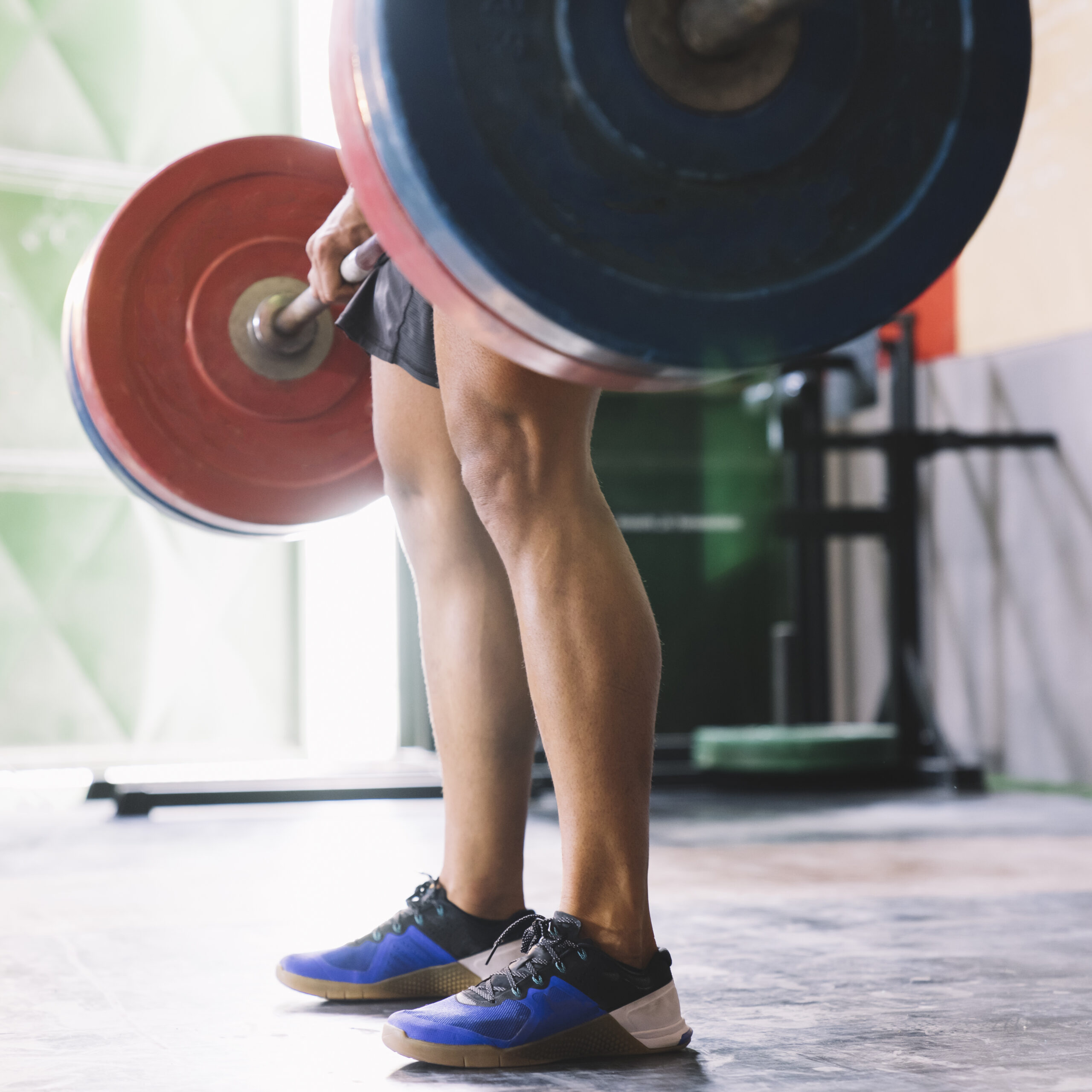A lot of runners ask, ‘Is it okay to run after leg day?’ And honestly, there’s no clear-cut answer
Leg day can be rough, but getting some miles in the next day isn’t impossible.
If you’re limping out of the gym, it’s only natural to question whether running is a smart move.
As a runner and coach, I’ve had my share of tough leg days where my legs feel done, but the urge to run is still there
Let’s break it down and figure out when it’s a good idea and how to do it without regretting every step.
Why Every Runner Needs to Do Leg Day
If you want to be a stronger, faster runner, skipping leg day isn’t an option. Sure, the more you run the better you get at it, but leg day? That’s the secret sauce for a powerful stride and injury prevention.
Just to clarify, leg day is all about working the muscles in your lower body. These include:
- The glutes
- The adductors
- The hamstrings
- The quadriceps
- The calves
Here’s why leg day matters:
- Better Running Efficiency. Research from the Journal of Strength and Conditioning shows that lower body strength training can make you a more efficient runner The study found that runners who incorporated leg-focused strength exercises improved their speed and endurance over time.
- Reduced Risk of Injury. A comprehensive review in Sports Medicine highlights that strength training helps address muscular imbalances, which are common among runners and can lead to injuries like IT band syndrome and runner’s knee. Building up muscles like your quads, hamstrings, and glutes keeps your joints stable and lowers injury risk.
- Improved Power and Speed. A study in the International Journal of Sports Physiology and Performance demonstrated that strength training contributes to improved sprint speed and acceleration, as stronger leg muscles generate more power with each stride. This is great for runners looking to pick up the pace or add sprints to their routine..
Should You Run Right After Leg Day?
So, can you actually run after leg day?
The answer isn’t a simple yes or no. Running right after a tough leg workout isn’t ideal because your muscles are tired, and glycogen levels are low.
I often tried to power through a run right after a brutal squat day, and it felt like running with cement blocks strapped to my legs. I usually have to humble my self and keep my pace as slow as possible.
So, why does this happen?
Let me explain more.
Your body relies on stored glycogen as fuel when you work out
The harder you exercise, the more fuel you burn up.
That’s why this energy reserve can get depleted when you perform any type of physical exercise.
What’s more?
Big moves like squats and deadlifts don’t just hit your legs—they work multiple muscles, and that’s exhausting.
The larger the muscle, the bigger the inflammation and micro tears, hence, the more soreness and pain.
That’s not the whole story.
Other things can affect how your miles feel after strength training.
These include your:
- Training intensity
- Training volume
- Training speed
- Order of exercises and workouts
- Recovery rate
- Fitness level
Because of this, any run right after a leg workout probably won’t be your best
If walking is tough because of soreness, it’s smart to skip running that day
If it’s only mild soreness, a gentle run can help loosen things up and speed up recovery.
When You Should Skip the Run After Leg Day
Sometimes it’s better to skip the run after leg day. Here are a few:
- Extreme soreness: If you’re struggling to walk, running will only worsen things. Pushing sore muscles can lead to injury or burnout.
- You pushed to failure: If you went hard in the gym and left everything on the floor, your body needs time to recover. Running right after can do more harm than good.
If you’re set on running, make it a light, easy one.
How to Run After Leg Day (Without Regretting It)
If you’re going to run after leg day, here’s how to make it manageable
- Start with a Proper Warm-Up Running on sore legs is rough, but a good warm-up can make a huge difference. Do some dynamic stretches—leg swings, lunges, or even brisk walking- to get your muscles loose and increase blood flow.
- Keep It Short and Easy After leg day, this is not the time to go for a PR or attempt a long run. Stick to a recovery run—keep the pace easy and the distance short. The goal is to move your legs and boost circulation, not to crush a workout.
- Wear Compression Gear I used to think compression socks were just a gimmick, but after trying them out, I’m sold. They help with circulation and reduce muscle fatigue, especially after a tough leg workout. Give them a shot—you might be surprised how much they help.
- Fuel Up Properly Running after leg day means your body works overtime to recover. Ensure you’re fueling up with the right mix of carbs and protein. Skipping food can make you hit the wall halfway through your run, and trust me, running on empty doesn’t feel good.
When Should You Skip the Run?
There are days when running just isn’t in the cards. If your legs feel like jelly and even walking is painful, it’s probably a good day to rest.
Pushing through extreme soreness can lead to injuries like strains or sprains. And let’s be real, no run is worth getting sidelined for weeks.
Listen to your body, and take a day off if you need to.
Further Reading on Strength Training and Running
For those interested in exploring the science behind strength training and running performance, here are some reputable resources:
- Runner’s World: “Strength Training for Runners: What You Need to Know” – Link
- American College of Sports Medicine: “The Benefits of Resistance Training for Endurance Athletes” – Link
- Journal of Sports Medicine and Physical Fitness: “Impact of Lower Body Strength on Running Performance” – Link
Conclusion: To Run or Not to Run After Leg Day?
To run or not to run after leg day depends on how your legs feel. If the soreness is manageable, a light recovery run can speed up recovery by boosting circulation. But if you’re too sore to walk properly, it’s best to take a rest day or opt for cross-training.
Remember, the key to long-term success is consistency. Missing a run or two after an intense leg day won’t derail your progress, but pushing too hard might.



I’ve always been hesitant to run after leg day because my legs feel so fatigued. But this article has me reconsidering!
Great advice! I typically skip running after leg day, but I’m going to try incorporating an easy recovery run next time. It might be the key to reducing soreness and keeping my fitness on track
I’ve tried running after leg day, but it always felt too challenging.
I wasn’t sure if running after leg day was a good idea, but this article convinced me to give it a try. I’ll start with light recovery runs and see how it affects my soreness
I’ve always avoided running after leg day because I thought it would lead to overtraining. This article showed me that it’s all about finding the right intensity—light runs might actually help me recover better
Great advice here! I used to think running after leg day would make things worse, but now I realize I was just going too hard. Easy runs or even walking seem like great options to keep moving.
I’ve always been nervous about running after leg day, but this article helped me see how it can be beneficial if done right
Interesting read! I’ve always felt conflicted about running after leg day, but this article makes a strong case for active recovery. I’ll try a slow run or even a walk next time and see how it goes.
I’ve always avoided running after leg day, but I might give it another try after reading this. The idea of light runs to aid recovery instead of pushing too hard makes sense.